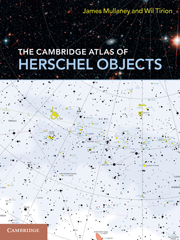Refine listing
Actions for selected content:
16950 results
16 - Meteorites
-
- Book:
- Patrick Moore's Data Book of Astronomy
- Published online:
- 05 June 2012
- Print publication:
- 10 February 2011, pp 279-287
-
- Chapter
- Export citation
1 - Introduction
-
- Book:
- An Introduction to Star Formation
- Published online:
- 05 June 2012
- Print publication:
- 10 February 2011, pp 1-20
-
- Chapter
- Export citation
31 - Non-optical astronomy
-
- Book:
- Patrick Moore's Data Book of Astronomy
- Published online:
- 05 June 2012
- Print publication:
- 10 February 2011, pp 517-525
-
- Chapter
- Export citation
Contents
-
- Book:
- Patrick Moore's Data Book of Astronomy
- Published online:
- 05 June 2012
- Print publication:
- 10 February 2011, pp v-v
-
- Chapter
- Export citation
Contents
-
- Book:
- An Introduction to Star Formation
- Published online:
- 05 June 2012
- Print publication:
- 10 February 2011, pp vii-x
-
- Chapter
- Export citation
Index
-
- Book:
- Patrick Moore's Data Book of Astronomy
- Published online:
- 05 June 2012
- Print publication:
- 10 February 2011, pp 560-576
-
- Chapter
- Export citation
2 - Probing star formation
-
- Book:
- An Introduction to Star Formation
- Published online:
- 05 June 2012
- Print publication:
- 10 February 2011, pp 21-38
-
- Chapter
- Export citation
9 - Jupiter
-
- Book:
- Patrick Moore's Data Book of Astronomy
- Published online:
- 05 June 2012
- Print publication:
- 10 February 2011, pp 179-199
-
- Chapter
- Export citation
7 - The formation of high-mass stars, and their surroundings
-
- Book:
- An Introduction to Star Formation
- Published online:
- 05 June 2012
- Print publication:
- 10 February 2011, pp 143-172
-
- Chapter
- Export citation
18 - The Stars
-
- Book:
- Patrick Moore's Data Book of Astronomy
- Published online:
- 05 June 2012
- Print publication:
- 10 February 2011, pp 293-298
-
- Chapter
- Export citation
List of figure credits
-
- Book:
- An Introduction to Star Formation
- Published online:
- 05 June 2012
- Print publication:
- 10 February 2011, pp 201-204
-
- Chapter
- Export citation
20 - Extra-solar planets
-
- Book:
- Patrick Moore's Data Book of Astronomy
- Published online:
- 05 June 2012
- Print publication:
- 10 February 2011, pp 309-314
-
- Chapter
- Export citation
List of Illustrations
-
- Book:
- An Introduction to Star Formation
- Published online:
- 05 June 2012
- Print publication:
- 10 February 2011, pp xi-xviii
-
- Chapter
- Export citation
List of mathematical symbols
-
- Book:
- An Introduction to Star Formation
- Published online:
- 05 June 2012
- Print publication:
- 10 February 2011, pp 195-200
-
- Chapter
- Export citation
7 - Mars
-
- Book:
- Patrick Moore's Data Book of Astronomy
- Published online:
- 05 June 2012
- Print publication:
- 10 February 2011, pp 127-155
-
- Chapter
- Export citation

The Cambridge Atlas of Herschel Objects
-
- Published online:
- 04 February 2011
- Print publication:
- 27 January 2011

Origins and Evolution of Life
- An Astrobiological Perspective
-
- Published online:
- 04 February 2011
- Print publication:
- 06 January 2011
11 - Aspects of plasma physics and magnetohydrodynamics
- from Part II - Physical processes
-
- Book:
- High Energy Astrophysics
- Published online:
- 05 June 2012
- Print publication:
- 03 February 2011, pp 298-330
-
- Chapter
- Export citation
9 - Interactions of high energy photons
- from Part II - Physical processes
-
- Book:
- High Energy Astrophysics
- Published online:
- 05 June 2012
- Print publication:
- 03 February 2011, pp 228-278
-
- Chapter
- Export citation
17 - The acceleration of high energy particles
- from Part III - High energy astrophysics in our Galaxy
-
- Book:
- High Energy Astrophysics
- Published online:
- 05 June 2012
- Print publication:
- 03 February 2011, pp 561-582
-
- Chapter
- Export citation
